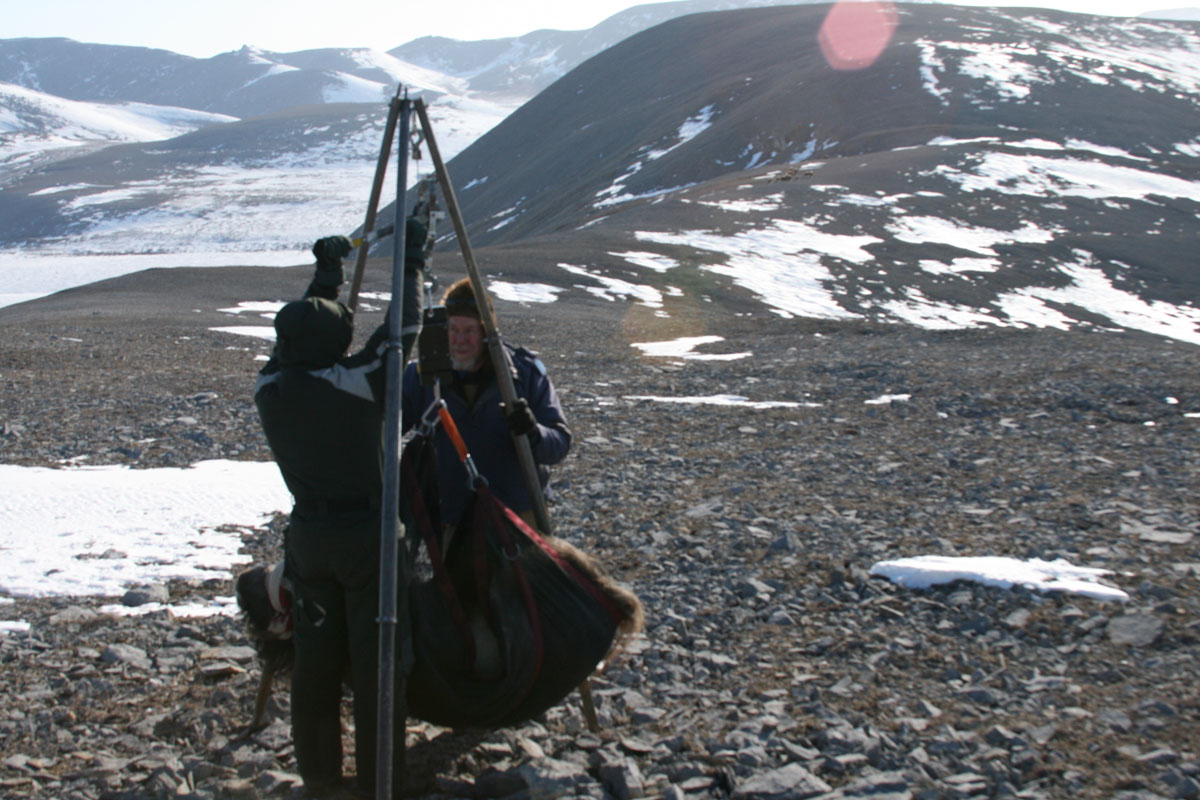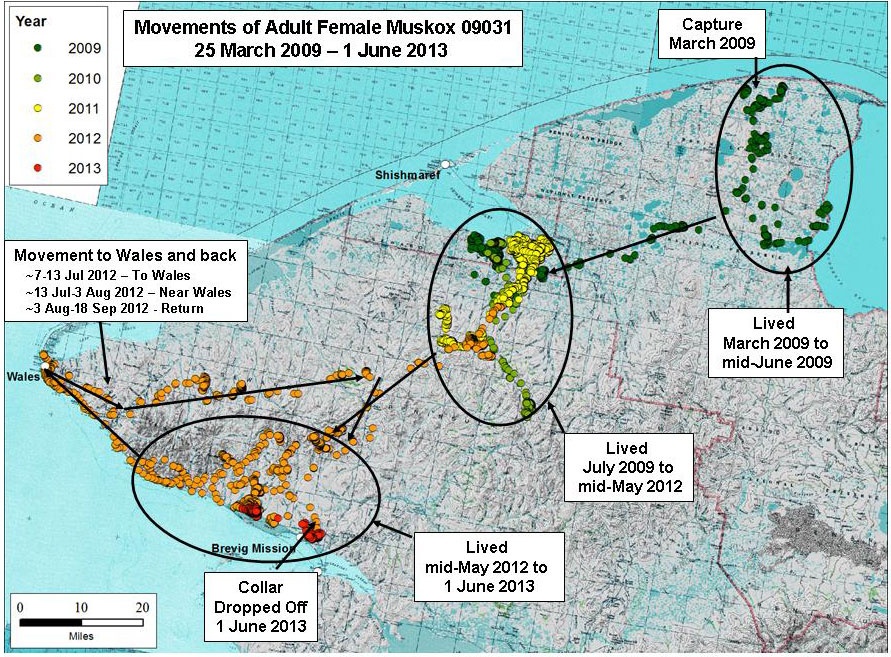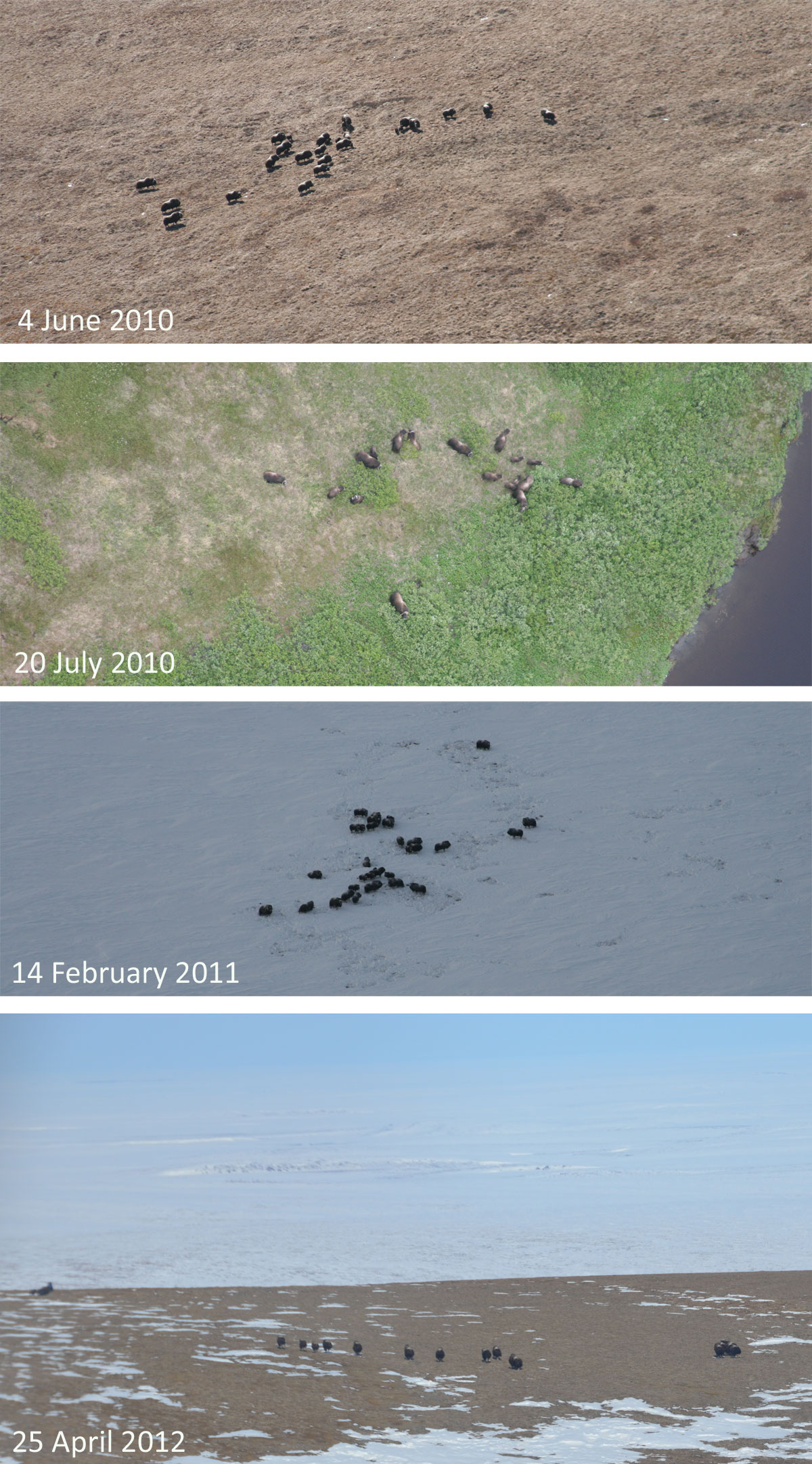Since March 2009, 121 adult female muskoxen have been fitted with radiocollars including 75 that carried conventional collars that were monitored by regular aircraft flights over the 2 study areas. The remaining 36 animals were fittled with radiocollars that determined the muskox’s location every 4 hours by GPS and then transmitted those locations each week to a satellite then on to the researchers. Monitoring the collared animals ended on 1 June 2013, when the collars were programmed to drop off of the muskoxen. In this post, Dr. Adams recounts the travels of a 567-pound adult female muskox, known as #09031, who was fitted with a satellite/GPS collar in late March 2009 and carried such a collar during the entire study.

Layne Adams and helicopter pilot Mark Shelton weigh a muskox in the Igichuk Hills of Cape Krusenstern National Monument (NPS Photo)
We initially captured her on 25 March 2009 about 15 miles west of Cape Espenberg. She remained there through the remainder of the winter, but in mid-May she moved south in the vicinity of the mouth of Goodhope River. In mid-June 2009, she made a directed movement over to the Serpentine River area and remained there till mid-May 2012, generally moving to the hills in late winter until about calving, but spending most of the year near the mouth of the Serpentine. In mid-May 2012, she made another directed movement and ended up in the mountains north and west of Brevig Mission. She was in that area for about 6 weeks, when she struck off towards Wales. She spent 13 July to 3 August in the vicinity of Wales, then took off again across the northern edge of the York Mountains before returning back to the Brevig Mission area by mid-September. Once back, she stayed in that vicinity and was there on 1 June 2013 when her collar fell off.

Map of the Movements of Muskox #09031 (USGS)
When we started the muskox project, the conventional wisdom was muskox have a very energy conservative lifestyle and that they tended to inhabit small home ranges throughout their life. While we have had some individuals that have limited home ranges, we have many examples of individuals that have made more extensive movements. These movements are of particular interest because we only radio-collared adult females that should be the least likely sex-age class in the population to make such shifts in their home ranges and exploratory movements (like the one depicted to Wales and back). Although the movements of this individual may set the extreme for movements we documented, the take-home message is that wide-ranging movements and interchange of individuals across long distances is occurring within the regions muskox inhabit.

Photos of the group containing muskox #09031 taken during radio-tracking flights (NPS Photos)
